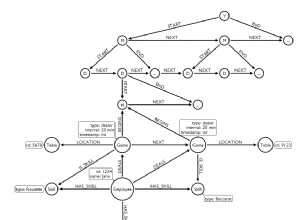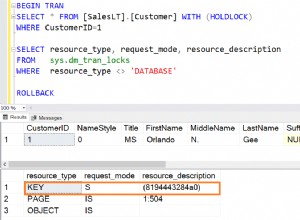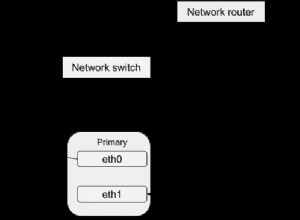Quando provi a generare errori tramite SIGNAL devi specificare SQLSTATE che è il codice di errore e per i codici di errore generici definiti dall'utente il suo 45000 insieme al testo del messaggio MESSAGE_TEXT
Quindi il trigger diventa come
delimiter //
create trigger lock_x_id before update on games
for each row
begin
if old.xid is not null then
signal SQLSTATE VALUE '45000' SET MESSAGE_TEXT = 'Your custom error message';
end if;
end;//
delimiter ;
Caso di prova
mysql> select * from games;
+----+------+------+
| id | xid | val |
+----+------+------+
| 1 | NULL | 1 |
| 2 | NULL | 2 |
| 3 | NULL | 3 |
| 4 | 1 | 4 |
| 5 | 2 | 5 |
+----+------+------+
Creiamo ora il trigger
mysql> delimiter //
mysql> create trigger lock_x_id before update on games
-> for each row
-> begin
-> if old.xid is not null then
-> signal SQLSTATE VALUE '45000' SET MESSAGE_TEXT = 'Your custom error message';
-> end if;
-> end;//
Query OK, 0 rows affected (0.05 sec)
mysql> update games set xid = 4 where id = 1;
Query OK, 1 row affected (0.06 sec)
Rows matched: 1 Changed: 1 Warnings: 0
mysql> update games set xid = 5 where id=5;
ERROR 1644 (45000): Your custom error message
E dopo aver eseguito i 2 comandi di aggiornamento precedenti, ecco come appare la tabella
mysql> select * from games;
+----+------+------+
| id | xid | val |
+----+------+------+
| 1 | 4 | 1 |
| 2 | NULL | 2 |
| 3 | NULL | 3 |
| 4 | 1 | 4 |
| 5 | 2 | 5 |
+----+------+------+
Nota che il 2° aggiornamento non è riuscito e la riga è invariata.
Ulteriori informazioni su questo https://dev.mysql.com/doc /refman/5.5/en/signal.html




